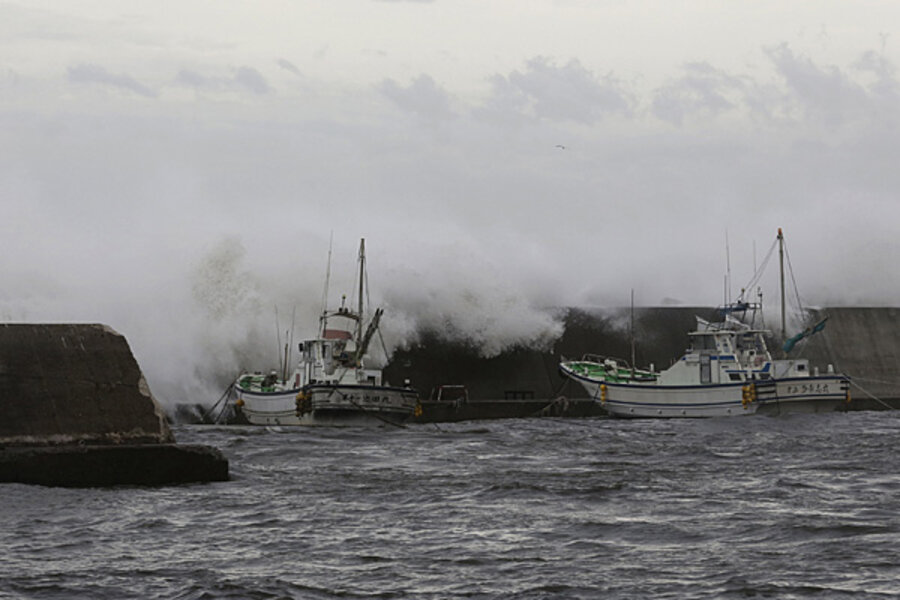Typhoon Man-yi complicates Fukushima nuclear cleanup
Loading...
The last thing cleanup workers at Fukushima need is a typhoon, but a typhoon is what they're getting.
Heavy rain and winds clocking in at 100 miles per hour slammed into Japan Monday. Typhoon Man-yi caused at least two fatalities and stirred fears at the crippled Fukushima Daiichi Nuclear Power Plant. On a typical day, workers have struggled to contain the 400 tons of contaminated water they pump out of the plant. Added rain from Typhoon Man-yi makes matters more complicated.
"The typhoon has little chance of destabilizing the reactors, but it will certainly add more water to a site already crowded with hastily assembled steel storage tanks and relatively poor oversight," Daniel Aldrich, a political scientist at Purdue University who has been following the Fukushima disaster, wrote in an e-mail.
As rain fell, workers pumped accumulating water from around those storage tanks into the Pacific Ocean in an effort to prevent flooding and radioactive contamination. That rainwater was untainted, according to Tokyo Electric Power Company (Tepco), the plant's operator. But Japan's Nuclear Regulation Authority said such a discharge could be subject to nuclear safety rules and was checking radiation levels.
The company also added new walls around the storage tanks to prevent future leaks in the run-up to the typhoon. Workers weighed down cranes and other materials to minimize wind damage.
Water has been both a blessing and a curse for the nuclear plant 155 miles northeast of Tokyo. It was a wall of water reaching as high as 49 feet that triggered much of the calamity at Fukushima in March 2011. Since then, cleanup crews have used vast amounts of the liquid to cool damaged fuel rods and prevent another meltdown.
But that leaves workers with hundreds of tons of radioactive wastewater. Tepco quickly built hundreds of onsite storage tanks to deal with the wastewater, but those tanks have sprung leaks. That challenge is in addition to the problem of contaminated groundwater flowing from the plant into the Pacific Ocean.
In one sense, the rainy weather could have a positive influence by further diluting radioactive water that is already flowing into the ocean.
"In the USA we have standards which allow for the discharge of low level amounts of radioactive materials to sanitary sewers and drains," Kathryn Higley, head of the department of nuclear engineering and radiation health physics at Oregon State University, wrote in an e-mail. "Dilution, although not the preferred method for dealing with contamination, is effective."
Either way, it's another hurdle for a two-year recovery plagued with mishaps. Tepco has recently called for support from nuclear experts around the globe, and the Japanese government recently stepped up its involvement in the cleanup. The government said earlier this month it will pay $470 million to construct an "ice wall" that would keep groundwater away from the contaminated plant.
With Tokyo winning the right to host the 2020 summer Olympic Games earlier this month, Japan is sensitive to the recovery's image abroad. Japanese officials complained when a French satirical publication published last week a cartoon linking the Olympics to the bungled cleanup at Fukushima.
"TEPCO's attempts at managing the Fukushima Dai-ichi meltdowns have been plagued by poor decisions, hasty construction, and a lack of long-term thinking," Mr. Aldrich wrote. "TEPCO has sought to use radioactivity monitoring stations and hand-held Geiger counters to keep track of the levels of radiation at the site, but many former local residents, [nongovernment organizations], and activists believe that the company has a poor track record in terms of transparent reporting."
Material from the Associated Press was used in this report.








